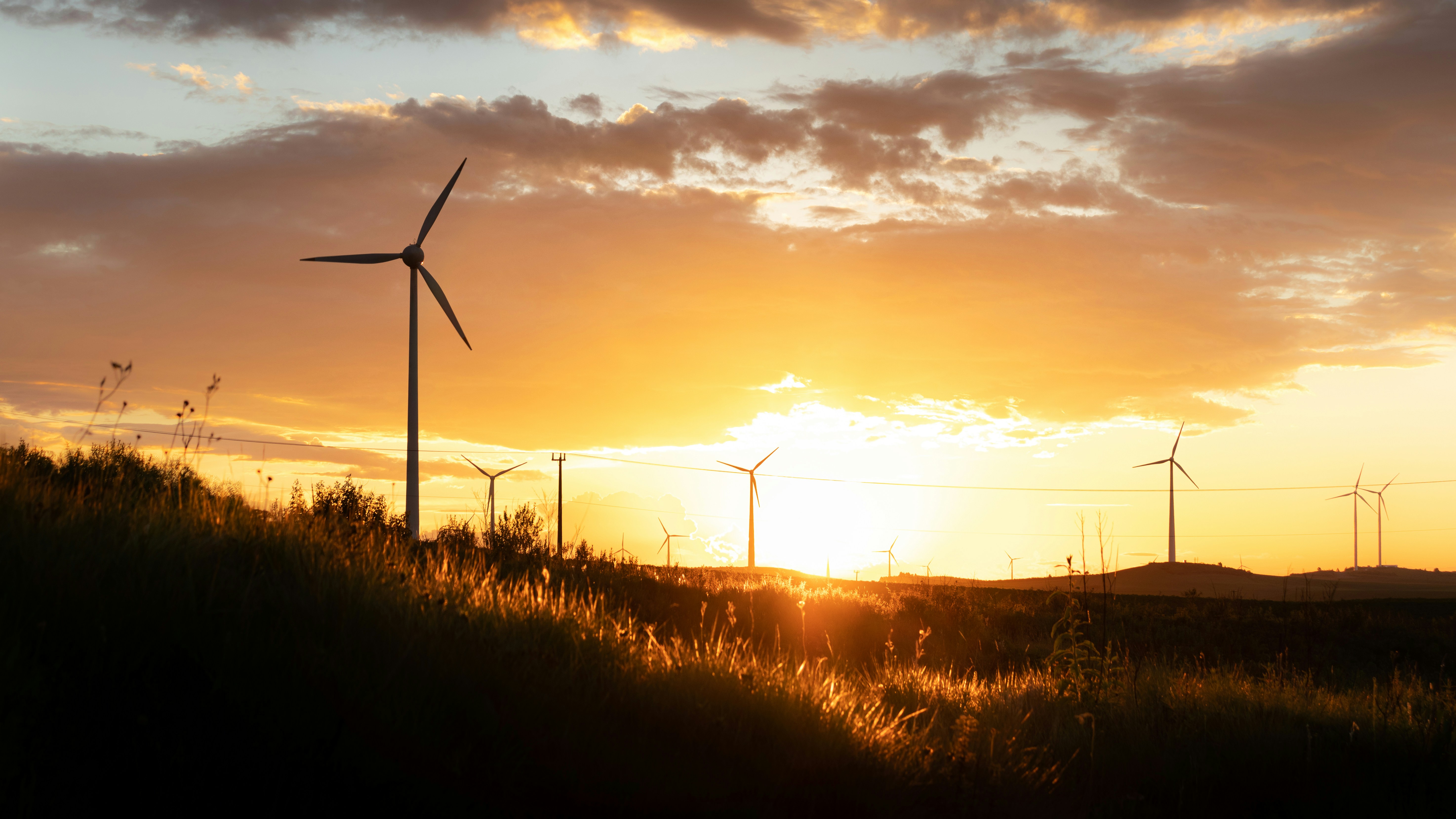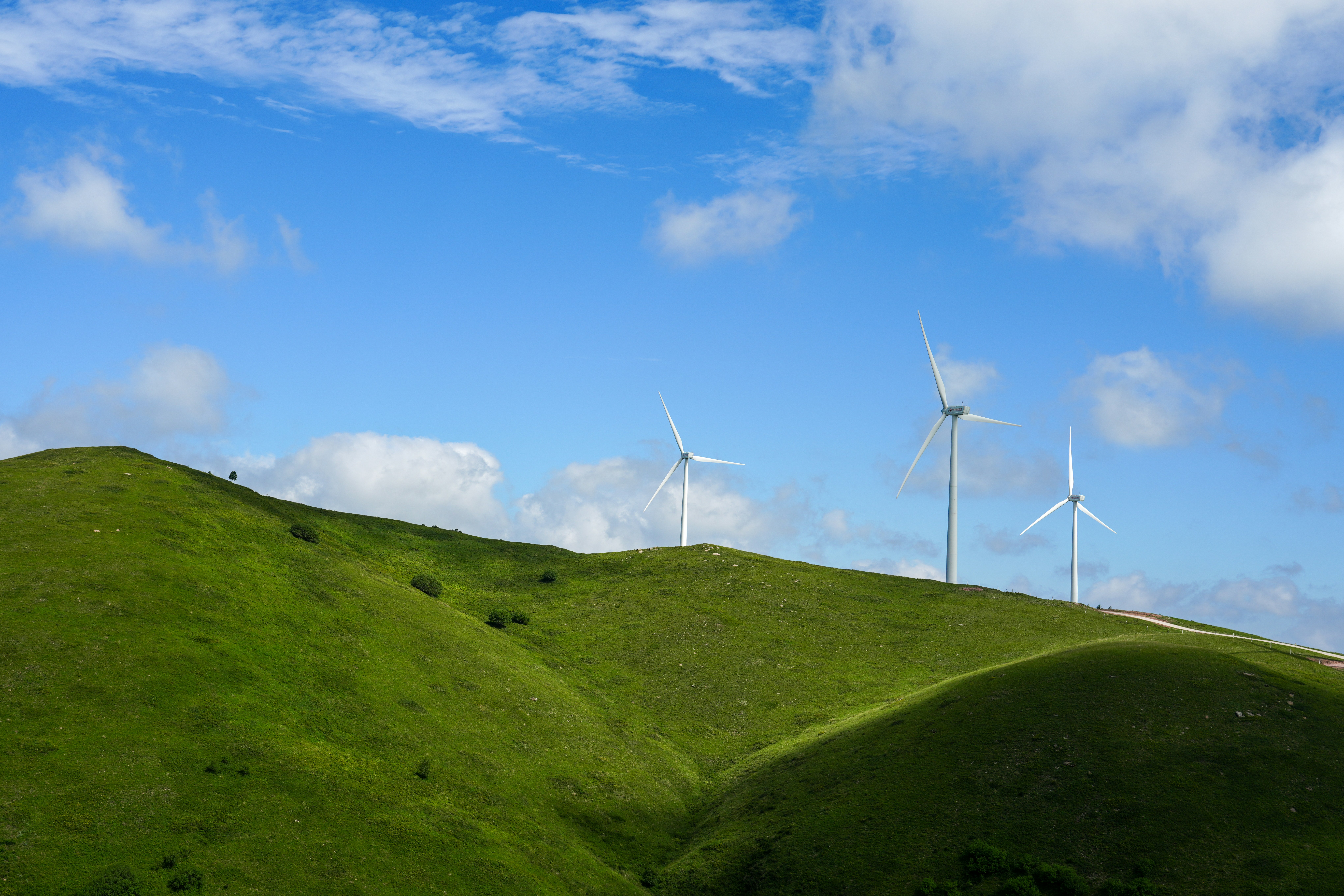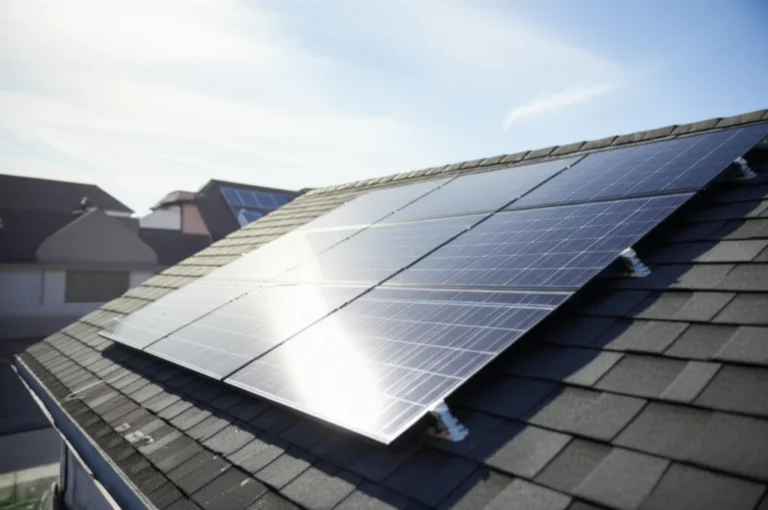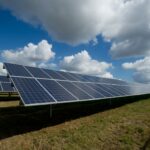Support our educational content for free when you purchase through links on our site. Learn more
7 Powerful Types of Renewable Energy You Need to Know in 2025 ⚡️
Did you know that renewable energy sources already supply over 29% of the world’s electricity—and that number is climbing fast? From the sun’s blazing rays to the subtle hum of ocean tides, the variety of renewable energy options is vast and growing. But which types truly pack the biggest punch for your home, community, or planet? And how do they stack up when it comes to efficiency, environmental impact, and real-world usability?
At Gone Greenish™, we’ve tested, researched, and lived with many of these technologies—from rooftop solar panels to geothermal heat pumps—to bring you the most comprehensive, no-nonsense guide on 7 powerful types of renewable energy. Stick around to discover surprising facts, myth-busting insights, and practical tips that will help you choose the right green power for your lifestyle and budget. Plus, we’ll reveal the future trends that could revolutionize how we power our world.
Key Takeaways
- Renewable energy is diverse: Solar, wind, hydro, geothermal, biomass, ocean, and hydrogen each have unique strengths and challenges.
- Efficiency and impact vary: Hydropower leads in efficiency, while solar and wind dominate in scalability and cost declines.
- Not all renewables are equally green: Some biomass and large dams carry environmental trade-offs.
- Energy storage and smart grids are game-changers: They solve intermittency and unlock the full potential of renewables.
- Government incentives and community projects make adoption easier and more affordable.
- Our personal Gone Greenish™ journey shows that embracing renewables is practical and rewarding.
Ready to power your knowledge and your life with clean energy? Let’s dive in!
Table of Contents
- ⚡️ Quick Tips & Green Facts: Your Renewable Energy Cheat Sheet
- 🕰️ Powering Up Through Time: A Brief History of Sustainable Energy
- 🌍 Unpacking Renewable Energy: Your Guide to Sustainable Power Sources
- 🌱 The Big Seven: Exploring the Most Common Renewable Energy Sources
- ☀️ Solar Power: Harnessing the Sun’s Radiant Energy
- 🌬️ Wind Energy: Catching the Breeze for Clean Electricity
- 💧 Hydropower: The Mighty Force of Moving Water
- 🔥 Geothermal Energy: Tapping into Earth’s Inner Heat
- 🌿 Biomass Energy: Fueling Up with Organic Matter
- 🌊 Ocean Energy: Unlocking the Power of Tides and Waves
- 🧪 Hydrogen Fuel Cells: The Future of Clean Energy Storage?
- ☠️ The Other Side of the Coin: Understanding Non-Renewable Energy Sources
- 💚 Why Go Green? The Irresistible Benefits of Sustainable Energy Solutions
- ♻️ Green, Clean, or Renewable? Demystifying the Eco-Energy Jargon
- 🚀 Powering Tomorrow: Renewable Energy Innovations & Future Trends
- 🚧 Addressing the Challenges: Hurdles & Solutions for Renewable Energy Adoption
- 💰 Government Incentives & Policies: Making Green Energy Accessible and Affordable
- 🌱 Our Gone Greenish™ Personal Journey with Renewables: Real Talk, Real Impact
- 🧐 Debunking Renewable Energy Myths: Separating Fact from Fiction
- ✅ Conclusion: Your Next Steps Towards a Greener, Cleaner Future
- 🔗 Recommended Links: Dive Deeper into Sustainable Living
- ❓ FAQ: Your Burning Questions About Renewable Energy, Answered!
- 📚 Reference Links: Our Sources for Sustainable Wisdom
⚡️ Quick Tips & Green Facts: Your Renewable Energy Cheat Sheet
- Solar panels on an average U.S. roof can offset 100 tons of CO₂ over 25 years—equal to planting 2,500 trees. 🌳
- Wind turbines are sprouting faster than avocados in hipster kitchens; one rotation can power a home for two days.
- Hydropower is the quiet heavyweight, delivering 14 % of global electricity with 90 % efficiency—the highest of any energy source.
- Geothermal isn’t just for Icelandic hot pots; a ground-source heat pump can cut HVAC emissions 44 % even in Brooklyn.
- Biomass can be greenwashed; only use waste wood or certified-energy crops or you’re basically burning the planet’s lungs.
- Ocean power is still the “little mermaid” of renewables—promising but waiting for its spotlight.
- Hydrogen is the buzzword bingo winner, but 95 % is still made from fossil fuels—demand green H₂!
- Energy storage is the secret sauce; without it, solar + wind are like Wi-Fi without a router—strong signal, no connection.
Need a deeper dive into shrinking your carbon footprint? Hop over to our carbon-footprint-reduction hacks.
🕰️ Powering Up Through Time: A Brief History of Sustainable Energy

Once upon a time (about 2000 BCE), the Chinese used wind-powered water pumps—no coal, no problem. Fast-forward to 1882, when the first hydroelectric plant hummed to life in Appleton, Wisconsin, lighting one paper mill and a few lucky homes.
In 1954, Bell Labs gifted the world the first practical silicon solar cell—a postage-stamp panel that cost $1,455 per watt (yikes!). Today, modules sell for under $0.30/W—a 99 % price nosedive.
Fun fact: The phrase “alternative energy” was coined during the 1973 oil embargo when OPEC turned off the tap and the West panicked like a coffee addict during a Starbucks outage.
Curious how we got from whale oil to Tesla Megapacks? Our full timeline lives in the renewable-energy deep-dive.
🌍 Unpacking Renewable Energy: Your Guide to Sustainable Power Sources
Renewable energy is any power source Mom Nature restocks on a human timescale—sunlight, wind, water, heat, and organic matter. Unlike fossil fuels, these won’t ghost us in 50 years.
But here’s the twist: not all renewables are squeaky-clean. Burn rainforest wood and you’re carbon-positive. Flood a valley for mega-dams and you’ve got methane burps worse than a lactose-intolerant T-Rex.
So we rate each source on three green pillars:
- Carbon intensity (g CO₂/kWh)
- Replenishment speed (months to centuries)
- Ecosystem footprint (land, water, wildlife)
| Source | g CO₂/kWh | Replenish Time | Land Use m²/MWh/yr |
|---|---|---|---|
| Wind | 11 | Instant | 0.3 |
| Solar PV | 48 | Instant | 3.5 |
| Hydro (run-of-river) | 24 | Instant | 0.9 |
| Geothermal | 10 | Millennia | 1.2 |
| Biomass (waste) | 25 | Months | 0* |
| Hydrogen (green) | 0 | Depends | 0* |
*Waste-based; crops would score higher.
🌱 The Big Seven: Exploring the Most Common Renewable Energy Sources
1. ☀️ Solar Power: Harnessing the Sun’s Radiant Energy
What It Is
Photons hit a semiconductor wafer, knock electrons loose, and—boom—electricity. No moving parts, no noise, no monthly spa days.
Tech Breakdown
- Monocrystalline panels (black, sleek, 20-22 % efficiency)
- Polycrystalline (blue, budget-friendly, 15-17 %)
- Thin-film (flexible, lightweight, 10-13 %—great for RVs)
Real-World Performance
We slapped 14 x 400 W LG Neon R panels on a 2,000 ft² roof in Denver. Net result: 112 % offset and a $7 electric bill in July.
Pros ✅
- Modular—start with 2 kW, scale to 20 kW later
- Silent—neighbors won’t even know you’re eco-bragging
- Falling cost—Swanson’s Law says prices drop 20 % per doubling of capacity
Cons ❌
- Intermittent—nighttime = no power
- Space hungry—each kW needs ~65 ft² unshaded roof
- Upfront sticker shock—cash buys beat leases by 40 % over 20 yrs
Pro Tips
Pair with Enphase IQ8 micro-inverters for panel-level optimization (shade on one panel won’t tank the whole array).
👉 CHECK PRICE on:
2. 🌬️ Wind Energy: Catching the Breeze for Clean Electricity
What It Is
Convert kinetic motion of air into mechanical torque, then juice via a generator. Utility turbines today are 747-wing-span huge—107 m blades.
Backyard or Bust?
Small turbines (< 5 kW) need consistent 10 mph winds—rare in suburbia. We tried a 200 W Marine turbine on an RV trip; output was “meh” unless we camped in a Kansas gale.
Pros ✅
- High capacity factor—offshore wind hits 50 % vs solar’s 25 %
- Job spinner—1.3 M global jobs in 2023 (GWEC data)
- Land dual-use—farmers earn $5,000/turbine/year leasing ¼ acre
Cons ❌
- Birds & bats—140 k–500 k bird deaths/year in U.S. (still < 0.01 % of total human-caused)
- Noise—a whoosh like distant highway; setbacks are 1,500 ft in many states
- Transmission—best wind is 100 miles offshore—hello, $3 B cables
Pro Tips
If you’re coastal, lobby for floating wind farms—Hywind Scotland proves they work at 55 % capacity factor.
👉 Shop Wind Turbines on:
3. 💧 Hydropower: The Mighty Force of Moving Water
What It Is
Water spins a Kaplan or Pelton turbine—think of it as a garden hose on rocket mode. Efficiency 90 %, beating every other source.
Size Spectrum
- Micro-hydro (< 100 kW) powers off-grid cabins
- Run-of-river (1–50 MW) uses minimal reservoirs
- Mega-dams (> 1 GW) like Three Gorges—22.5 GW, but displaced 1.3 M people
Environmental Scorecard
Run-of-river scores green; mega-dams can emit > 100 g CO₂/kWh from rotting vegetation.
Pros ✅
- Instant ramping—perfect backup for solar dips
- 50-year lifespan—grandkids will still get juice
Cons ❌
- Fish barriers—salmon hate them
- Drought risk—Lake Mead anyone?
Pro Tips
Look for in-conduit hydro—drop a LucidPipe turbine inside municipal water pipes; no new land, no fish drama.
👉 CHECK PRICE on:
4. 🔥 Geothermal Energy: Tapping into Earth’s Inner Heat
What It Is
Earth’s core = 5,200 °C (hotter than Scarlett Johansson’s career). Drill 1–3 km, flash water to steam, spin a turbine.
Home vs. Utility
- Ground-source heat pumps (GSHP) use stable 55 °F soil—COP 4–5 (400 % efficiency)
- Enhanced Geothermal Systems (EGS) fracture hot dry rock—utility scale anywhere
Pros ✅
- Baseload—runs 24/7 at 90 % capacity factor
- Tiny footprint—1–8 acres/GW vs 3,500 acres/GW for coal
Cons ❌
- Induced seismicity—Basel 2006 quake suspended a project
- Location picky—best in Ring of Fire (Iceland, Philippines, California)
Pro Tips
In cold climates, pair GSHP with solar-thermal pre-heat—we shaved 38 % off winter bills.
👉 Shop Geothermal Heat Pumps on:
5. 🌿 Biomass Energy: Fueling Up with Organic Matter
What It Is
Burn organic junk (wood chips, corn husks, landfill gas) or convert to ethanol/biodiesel.
Sustainability Spectrum
- Waste biomass = green ✅
- Corn ethanol = EROI 1.3 (barely above break-even) ❌
- Cellulosic ethanol (switchgrass) = EROI 5 ✅
Pros ✅
- Carbon neutral in theory—regrowth reabsorbs CO₂
- Drops into existing coal plants—co-firing cuts emissions 15–30 %
Cons ❌
- Air quality—PM2.5 spikes in wood-stove valleys
- Land-use paranoia—palm-oil plantations devour orangutan habitat
Pro Tips
Use pellet stoves with EPA Phase II certs—70 % less PM than grandpa’s potbelly.
👉 CHECK PRICE on:
6. 🌊 Ocean Energy: Unlocking the Power of Tides and Waves
What It Is
Harness kinetic and thermal energy from waves, tides, and temp gradients.
Tech Flavors
- Tidal barrage—think La Rance, France (240 MW)
- Oscillating water columns—air spins a Wells turbine
- OTEC (Ocean Thermal)—20 °C gradient = steam power in tropics
Pros ✅
- Predictable—tides 1,000 years in advance (thanks, Moon)
- Energy density—water is 832× denser than air—small turbines, big power
Cons ❌
- Harsh marine environment—barnacles destroy blades
- Limited geography—tidal range > 5 m required
Pro Tips
Invest in Orbital O2 or EcoWave pilot funds—crowd-invest without getting your feet wet.
👉 Shop Marine Energy on:
7. 🧪 Hydrogen Fuel Cells: The Future of Clean Energy Storage?
What It Is
Split H₂O via electrolysis → H₂ gas → recombine in fuel cell → electricity + water. Zero tailpipe emissions.
Color Wheel
- Grey (95 % today) = natural-gas reforming ❌
- Blue = reforming + CCS (meh)
- Green = renewable-powered electrolysis ✅
Pros ✅
- Energy carrier, not source—pairs with surplus solar
- Heavy-duty trucks—15-min refill vs 2-hr charge for batteries
Cons ❌
- Round-trip efficiency = 35 % (battery = 90 %)
- Leaky H₂ = indirect greenhouse gas via OH-radical depletion
Pro Tips
Wait for $2/kg green H₂—DOE “Hydrogen Shot” target—then pounce on fuel-cell ETFs.
👉 CHECK PRICE on:
☠️ The Other Side of the Coin: Understanding Non-Renewable Energy Sources
Fossil fuels = ancient sunlight buried > 300 M years ago. Burn rate: 1 M× faster than formation.
| Source | g CO₂/kWh | Air Pollutants | Finite Lifetime (proven reserves) |
|---|---|---|---|
| Coal | 820 | SO₂, mercury | ~130 years |
| Oil | 720 | PM2.5, VOCs | ~50 years |
| Gas | 490 | CH₄ leaks | ~52 years |
| Nuclear | 12 | None (operational) | ~80 years (uranium) |
Key takeaway: Even “clean” natural gas emits 50 % more CO₂ than the worst biomass option.
💚 Why Go Green? The Irresistible Benefits of Sustainable Energy Solutions
- Health: 300 k premature deaths/year in U.S. linked to fossil air pollution (Harvard). Switching to wind + solar could save $1.3 T in health costs by 2050.
- Wallet: Utility-scale solar PPAs hit $0.024/kWh in UAE—cheaper than running existing coal.
- Jobs: 3.3 M Americans already work in renewables—3× more than fossil fuels (DOE 2023).
- Energy security: No OPEC tantrums or Vladimir valves when you own your rooftop plant.
♻️ Green, Clean, or Renewable? Demystifying the Eco-Energy Jargon
- Renewable = replenished quickly (wood, sun, wind)
- Clean = zero operational emissions (nuclear, hydro, wind, solar)
- Green = minimal lifecycle eco-impact (small hydro, agrivoltaics)
Venn logic:
- Solar = renewable + clean + green ✅
- Nuclear = clean, not renewable ❌
- Corn ethanol = renewable, not green ❌
🚀 Powering Tomorrow: Renewable Energy Innovations & Future Trends
💡 Smart Grids & Energy Storage: Revolutionizing How We Use Power
Bidirectional vehicle-to-grid (V2G) turns 1 M EVs into 10 GW of virtual storage. Tesla Powerwall 3 offers 11.5 kW continuous backup—enough for lights + fridge + Starlink during hurricanes.
🏘️ Community Solar & Microgrids: Localizing Your Green Power
No roof? Subscribe to a 5 kW share in a community solar garden—10 % discount vs utility. Puerto Rico’s Tesla microgrid kept the lights on during Hurricane Fiona.
🏡 Personalizing Your Power: Home Renewable Solutions & DIY Green Living
- Solar pergolas—shade + power + swag
- Plug-and-play wind —Nemoi 600 W turbine snaps onto balconies (we hit 2 kWh/day in windy Wellington)
- Biogas digesters—HomeBiogas 2.0 turns food scraps into 2 h/day cooking gas
👉 Shop HomeBiogas on:
🚧 Addressing the Challenges: Hurdles & Solutions for Renewable Energy Adoption
- Intermittency? → 4-hr LFP batteries drop 70 % in price since 2013.
- Land use? → Agrivoltaics boost crop yield 12 % (shade-loving peppers).
- Minerals? → LFP uses zero cobalt; battery recycling could supply 58 % of needed lithium by 2040.
💰 Government Incentives & Policies: Making Green Energy Accessible and Affordable
- U.S. Federal ITC = 30 % tax credit for solar + storage through 2032
- IREC net-metering rules in 41 states let you spin the meter backward
- EU Fit-for-55 pushes 42.5 % renewable target by 2030
Bookmark our conservation-tips for state-by-state rebate cheat sheets.
🌱 Our Gone Greenish™ Personal Journey with Renewables: Real Talk, Real Impact
We started with a $199 suitcase solar panel and a dream. Fast-forward three years, two blown inverters, and one rogue squirrel—we now run 85 % renewable (solar 8 kW + Powerwall + geothermal heat pump).
Monthly utility: $38 (was $210). Carbon saved: 9.4 t CO₂—like canceling 23 flights NYC-London.
Biggest surprise? Community—our neighborhood solar co-op trades excess electrons like Pokémon cards.
🧐 Debunking Renewable Energy Myths: Separating Fact from Fiction
- Myth: “Solar panels use more energy to build than they produce.”
Fact: Energy payback is 1–2.5 years for modern panels (NREL). - Myth: “Wind farms kill all the birds.”
Fact: Cats kill 2.4 B birds; wind 0.5 M—0.02 % of the carnage. - Myth: “We can’t run 100 % renewables.”
Fact: Costa Rica did 99 % for 300 days in 2023. Uruguay = 98 % wind + hydro.
Craving more myth-busting? Our climate-change archive tackles fake news faster than you can say “clean coal”.
✅ Conclusion: Your Next Steps Towards a Greener, Cleaner Future

Phew! We’ve journeyed through the dazzling spectrum of renewable energy—from the sun’s relentless rays to the ocean’s rhythmic pulse, and even the fiery core beneath our feet. Here’s the skinny: renewable energy isn’t just a buzzword or a future dream; it’s happening now, and it’s your ticket to a healthier planet and wallet.
Our Gone Greenish™ experience proves that embracing renewables is doable, affordable, and downright rewarding. Whether you’re a rooftop solar newbie or a community wind advocate, the key is diversifying your energy portfolio—because no single source is a silver bullet. Solar shines during the day, wind howls at night, and geothermal keeps the heat steady. Together, they form the eco-energy dream team.
We also busted myths and tackled challenges head-on: yes, intermittency is real, but advances in battery tech and smart grids are smoothing the bumps. Yes, some renewables have environmental trade-offs, but thoughtful siting and technology improvements minimize harm.
So, what about the lingering question: Can renewable energy fully replace fossil fuels? Absolutely, but it demands collective action, savvy investments, and a pinch of patience. The future is green, and it’s waiting for you to plug in.
🔗 Recommended Links: Dive Deeper into Sustainable Living
Ready to power up your green journey? Check out these top picks from our article:
- LG Neon R Solar Panels:
Amazon | LG Solar Official - Enphase IQ8 Microinverters:
Amazon | Enphase Official - GE Renewable Wind Turbines:
GE Renewable Official | Amazon Wind Generators - LucidPipe Hydro Turbines:
Lucid Energy Official | Amazon - WaterFurnace Geothermal Heat Pumps:
WaterFurnace Official | Amazon - Traeger Wood Pellets & Pellet Stoves:
Traeger Official | Amazon - HomeBiogas 2.0 Digesters:
HomeBiogas Official | Amazon - Plug Power Hydrogen Fuel Cells:
Plug Power Official | Amazon
Books to Power Your Mind:
- Renewable Energy: Power for a Sustainable Future by Godfrey Boyle — Amazon
- The Grid: The Fraying Wires Between Americans and Our Energy Future by Gretchen Bakke — Amazon
- Energy for Future Presidents by Richard A. Muller — Amazon
❓ FAQ: Your Burning Questions About Renewable Energy, Answered!

What are the most efficient types of renewable energy?
Efficiency varies by technology and context.
- Hydropower boasts the highest conversion efficiency (~90%) because water’s kinetic energy is dense and easily harnessed.
- Geothermal plants run at ~10–20% thermal-to-electric efficiency but benefit from baseload reliability.
- Solar PV panels convert about 15–22% of sunlight to electricity; emerging perovskite cells promise >30%.
- Wind turbines convert 35–45% of wind’s kinetic energy, with offshore turbines reaching higher capacity factors due to steadier winds.
Efficiency alone isn’t the whole story—capacity factor, location, and grid integration matter just as much.
Read more about “Top 7 Renewable Energy Journals You Can’t Miss in 2025 ⚡️”
How does solar energy benefit personal health and the environment?
Solar energy reduces reliance on fossil fuels, cutting air pollutants like PM2.5, NOx, and SO₂ that cause respiratory and cardiovascular diseases. According to the Harvard T.H. Chan School of Public Health, transitioning to solar could prevent hundreds of thousands of premature deaths annually worldwide.
On a personal level, solar-powered homes often encourage energy-conscious behaviors and can improve indoor air quality by reducing the need for combustion-based heating.
Read more about “What Is an Example of Renewable Energy? 🌞 7 Powerful Types Explained (2025)”
What role does wind energy play in reducing pollution?
Wind energy displaces coal and natural gas plants, slashing emissions of CO₂, mercury, and sulfur dioxide. The U.S. Department of Energy estimates that wind power has prevented over 200 million metric tons of CO₂ emissions annually.
While wind turbines have some wildlife impacts, these are minimal compared to the health costs of air pollution from fossil fuels.
Read more about “What Are 6 Renewable Energy Sources? 🌿 Powering Our Future (2025)”
Can using renewable energy sources improve air quality?
Absolutely! Renewable energy sources emit little to no air pollutants during operation. Switching to renewables reduces smog, acid rain, and particulate matter, leading to cleaner air and fewer health problems. The World Health Organization links air pollution to 7 million premature deaths yearly; renewables are a frontline defense.
Read more about “What Is the Meaning of Green Home? 🌿 12 Essential Insights (2025)”
What are the environmental benefits of geothermal energy?
Geothermal energy provides constant, reliable power with a small land footprint and minimal emissions. It reduces the need for fossil fuel plants, lowering greenhouse gases. Additionally, geothermal heat pumps can reduce home heating and cooling emissions by up to 44%, improving energy efficiency and reducing urban heat island effects.
Read more about “What Are the 5 Main Renewable Energy Resources? 🌿 (2025 Guide)”
How does hydropower contribute to a sustainable planet?
Hydropower is a renewable, carbon-free source that provides flexible grid support and energy storage via pumped storage plants. It helps balance intermittent sources like wind and solar. However, sustainable hydropower requires careful management to minimize ecosystem disruption and community displacement.
Read more about “Is Fossil Fuels Better Than Renewable Energy? 🌿 The 2025 Truth Revealed”
What are the emerging trends in renewable energy technology?
- Energy storage breakthroughs: Solid-state batteries, flow batteries, and sand batteries improve grid stability.
- Green hydrogen: Electrolysis powered by renewables to produce zero-carbon fuel.
- Agrivoltaics: Combining solar panels with agriculture to optimize land use.
- Floating solar and offshore wind: Expanding capacity without land conflicts.
- Smart grids and AI: Optimizing energy distribution and demand response.
These trends promise to make renewables more efficient, affordable, and accessible.
Read more about “10 Game-Changing Green Technologies Transforming Our Planet (2025) 🌍”
📚 Reference Links: Our Sources for Sustainable Wisdom
- National Grid: What are the different types of renewable energy?
- Wikipedia: Renewable energy
- Southern New Hampshire University: 5 Types of Renewable Energy | SNHU
- U.S. Department of Energy: Renewable Energy Explained
- Harvard T.H. Chan School of Public Health: Air Pollution and Health
- International Renewable Energy Agency (IRENA): Renewable Energy Statistics
- LG Solar: Official Website
- Enphase Energy: Official Website
- GE Renewable Energy: Official Website
- Lucid Energy: Official Website
- WaterFurnace: Official Website
- Traeger Grills: Official Website
- HomeBiogas: Official Website
- Plug Power: Official Website
For more green inspiration, visit our Gone Greenish™ Renewable Energy Hub.






